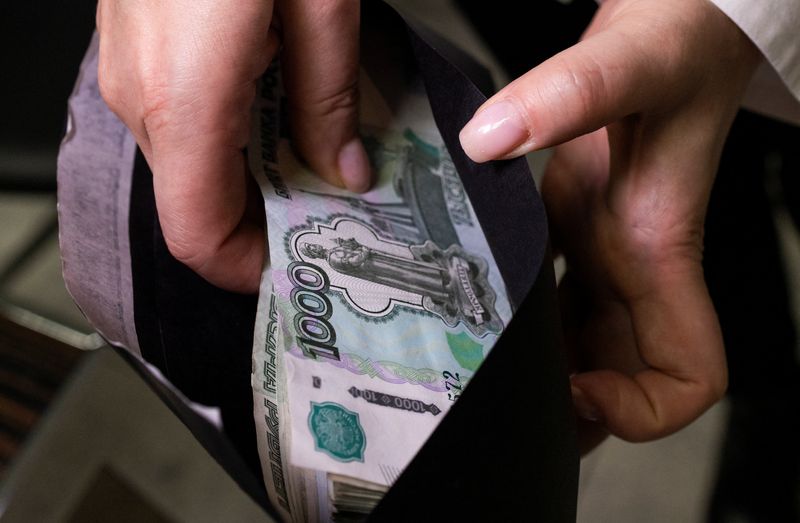Month: November 2024
Some Bitcoiners Need To Grow Up And Focus On Their Own Shit
Too much of the discussions around Bitcoin in the last year have been focused on how to use it. Or how it should be used. The entire Ordinals/Inscriptions mania over the last year has created a mob of Bitcoiners essentially shrieking like children about how other users decide to make use of their own bitcoin.
This is completely detached and disconnected from the entire philosophy of Bitcoin’s design in the first place: to be an open access permissionless system. To be something you can’t be stopped from using. So much of the “technical discussions” over the last year beyond the developer community have focused heavily on technical mechanisms that can be used to stop other Bitcoin users from using Bitcoin.
It is mind boggling to me that so many people in this space have made such changes, which are ultimately impossible to make without also crippling the uses of Bitcoin they arbitrarily put on the “approved” list, such a massive focus of theirs. It’s insane. Bitcoiners are actively trying to figure out how to censor other Bitcoiners because they do not like the way they use Bitcoin.
There are two primary rationalizations for this. 1) That inscriptions are hurting people’s ability to bootstrap a new full node. This is false, the bottleneck of initial node syncing is not bandwidth (where inscriptions have made small increases in the data needed), it is verification of the data. Inscriptions don’t need to be verified. The more inscriptions there are, the cheaper verification costs are, because nodes just download it and verify nothing involving the inscription data when validating those transactions. 2) That it is increasing fees. Increasing fees are inevitable, and a result of a finite blocksize cap.
Here is what Satoshi said in 2010 to someone complaining about fees:
“It’s only when you’re sending a really huge transaction that the transaction fee ever comes into play, and even then it only works out to something like 0.002% of the amount. It’s not money sucked out of the system, it just goes to other nodes. If you’re sad about paying the fee, you could always turn the tables and run a node yourself and maybe someday rake in a 0.44 fee yourself.”
These arguments are just broken, and completely missing the point. If you can stop someone from using Bitcoin, then Bitcoin has failed in its core value proposition. There is nothing that can regulate the use of a Bitcoin that actually functions how it is supposed to except economic pressure from fees. If anything but that can stop you from using the system, it doesn’t work. It is not censorship resistant. It has failed.
People upset about the externalities of use cases that affect their own should do something productive, like focus on how to adapt their own uses of Bitcoin in a way that they still function properly in the face of people using it for other purposes.
Instead, many Bitcoiners are simply crying to mommy and daddy to make the bad men stop using Bitcoin. The fact that this is still to any degree an argument present in the conversation is just sad at this point. It’s also one of the contributing factors to improvements to Bitcoin that could adapt their use cases to function properly in the face of others stalling.
It’s time to grow up and stop crying about what other people are doing with their own property, and focus instead on how to do what you want with your own.
This article is a Take. Opinions expressed are entirely the author’s and do not necessarily reflect those of BTC Inc or Bitcoin Magazine.
Russian central bank intervenes as rouble tumbles past 110 to the dollar
Post Content
US dollar could pull back amid central bank ‘bonanza’
Post Content
Bitcoin is Neither Racist, Xenophobic, nor Misogynistic: A Response to Ideological Stereotyping
Just hours after the U.S. election results were announced, I received messages from friends filled with striking assumptions. Some congratulated me, mockingly saying, “Congrats, your side won for Bitcoin.” Others expressed disapproval with remarks like, “It’s pathetic!” and “I’m shocked that Americans just voted for Hitler.” One friend said, “You were lucky to find safety in the U.S. as a refugee under Biden’s administration. Refugees and asylum seekers will now face a harder time here, but, hey, it’s still good for your Bitcoin.” Many of these friends work in high-level corporate jobs or are university students.
As a Green Card holder, I was not eligible to vote, but I recognize their huge disappointment in seeing their preferred candidate lose. Their frustrations were directed at me because they know I support Bitcoin and work in the space. I understand that making me a scapegoat says less about me and more about their limited understanding of what Bitcoin’s value represents.
I’m aware that in this highly polarized political landscape, ideological stereotyping becomes evident—not only during election season but also in spaces where innovative thinking should be encouraged. A prime example of this ideological bias occurred during the Ohio State University commencement, where Chris Pan’s speech on Bitcoin was largely booed by students attending their graduation ceremony. I admire the courage it took to stand firm in front of over 60,000 people and continue his speech. My guess is that most of these graduating students have never experienced hyperinflation or grown up under authoritarian regimes, which likely triggered an “auto-reject”’ response to concepts beyond their personal experience.
I’ve encountered similar resistance in my own unfinished academic journey; during my time at Georgetown, I had several unproductive conversations with professors and students who viewed Bitcoin as a far-right tool. Once a professor told me, “Win, just because cryptocurrency (he didn’t use the term Bitcoin) helped you and your people in your home country doesn’t make it a great tool—most people end up getting scammed in America and many parts of the world. I urge you to learn more about it.” The power dynamics in academic settings often discourage open-minded discourse, which is why I eventually refrained from discussing Bitcoin with my professors.
I’ve learned to understand that freedom of expression is a core American value. Yet, I’ve observed that certain demographics or communities label anyone they disagree with as ‘racist.’ In more extreme cases, this reaction can escalate to using influence to have people fired, expelled from school, or subjected to coordinated cyberbullying. I’m not claiming that racism doesn’t exist in American society or elsewhere; I strongly believe both overt and subtle forms of racism still persist and are well alive today.
Although bias and inequality remain widespread, Bitcoin operates on entirely different principles. Bitcoin is borderless, leaderless, and accepting of any nationality or skin color all while without requiring any form of ID to participate. People in war-torn countries convert their savings into Bitcoin to cross borders safely, human rights defenders receive donations in Bitcoin, and women living under the Taliban get paid through the Bitcoin network.
Bitcoin is not racist because it is a tool of empowerment for anyone who is willing to participate. Bitcoin is not Xenophobic because it gives those forced to flee their homes the power to carry their hard-earned economic energy across borders and participate in another economy when every other option is closed. For activists, often branded as ‘criminals’ by authoritarian regimes, it supports them through frozen bank accounts and blocked resources. For women, enduring life under misogynistic rule, Bitcoin offers a rare chance for financial independence.
Going back to the U.S. election context, Bitcoin not only levels the playing field for people in the world’s most forgotten places and darkest corners, but it also opens new avenues for U.S. presidential candidates to engage with this growing community. President-elect Donald Trump has made bold promises regarding Bitcoin, signaling a favorable policy. In contrast, Democratic candidate Vice President Kamala Harris’s campaign reportedly declined to support the Bitcoin community. Grant McCarty, co-founder of the Bitcoin Policy Institute, stated, “Can confirm that the Harris campaign was offered MILLIONS of dollars from companies, PACs, and individuals who were looking for her to simply take meetings with key crypto stakeholders and put together a defined crypto policy plan. The campaign never took the industry seriously.” I believe this is something most people may be unaware of, and confirmation bias often leads to the assumption that all Bitcoin supporters back every policy of the other side, including potential drastic changes to America’s humanitarian commitments such as refugee resettlement and asylum programs, anti-trafficking and protection of vulnerable populations, and foreign aid and disaster relief.
Most people around the world lack a stable economic infrastructure or access to long-term mortgages; they live and earn with currencies more volatile than crypto gambling and, in some cases, holding their own fiat currency is as dangerous as casino chips, or worse.
The Fiat experiment has failed the global majority. I believe that Bitcoin and Bitcoin advocates deserve to be evaluated on their merits and work on global impact, rather than through the binary lens of political bias, misappropriated terms, or factually flawed yet socially accepted diminutive categorizing, which allows them to opt out of learning and evaluating assumptions.
This is a guest post by Win Ko Ko Aung. Opinions expressed are entirely their own and do not necessarily reflect those of BTC Inc or Bitcoin Magazine.
Here’s How To Talk About Bitcoin At The Thanksgiving Table
Follow Frank on X.
It’s that time again — time to sit around the Thanksgiving table and catch up with loved ones while you have Bitcoin on the mind thanks to its recent price action.
Some see this time as an opportunity to convince said loved ones that they should get on the Bitcoin rocket ship because it’s headed towards the moon.
My humble advice: Don’t be that person.
As you’ve probably learned if you’ve been in the Bitcoin space for some time now, bitcoin’s volatility can be quite unsettling, and, therefore, it isn’t for everyone. In other words, convincing sweet Auntie Jane to ape into bitcoin probably isn’t going to end well.
While you may have personally benefitted from holding bitcoin for some period of time, it doesn’t mean others will have the same experience. Without some understanding of bitcoin’s cycles, most will panic sell when bitcoin’s price inevitably drops again.
With that said, if Uncle Bob asks you about Bitcoin because he’s heard that its price has gone up recently and he knows that you’re familiar with it, you can still point him in the right direction as far as onboarding resources (a far better strategy than becoming his personal Bitcoin advisor).
Below are some examples of such resources:
Simple Bitcoin — This Bitcoin education app presents you with information on Bitcoin via digestible learning modules, and it rewards you with sats when you get a passing grade on the post-module quizzes. Uncle Bob will be grateful that you made learning Bitcoin so easy for him.Yzer — Yzer, another Bitcoin education app, goes much deeper into the technology and economic philosophy that underpins Bitcoin. Its curriculum is more extensive than Simple Bitcoin’s, but it also rewards you with sats for completing quizzes with passing scores the same way Simple Bitcoin does. Nerdy Cousin Linda will be pumped to learn who Friedrich Hayek and Ludwig Von Mises were thanks to this app.THNDR Games — With THNDR, you can earn bitcoin just for playing games. Whether it’s Solitaire, Snake or Tetro Tiles (a play on Sodoku), THNDR can help Auntie Katrina stack sats for doing little more than playing video games on her phone. Plus, THNDR teaches her how to use a Lightning wallet.Gemini Credit Card — If you have a family member that’s into credit card rewards, tell them that with the Gemini rewards card they can earn bitcoin for everyday purchases, including 4% back on EV charging and gas at the pump, 3% back on dining out and 2% back on groceries. The kicker here is that there’s no membership free. This is great for cheap Uncle Bruce who showed up to Thanksgiving dinner empty-handed yet again this year.Fold — Fold offers you a checking account through which you can make your monthly payments and earn bitcoin rewards in the process. Imagine doing nothing more than paying your electric bill and earning some bitcoin in the process. Fold’s annual membership fee is $100, or users can pay $10 per month to use the service. Sign up now and get three months free. Great for Black-Friday-deal-searching Aunt Crystal.
So, best of luck tomorrow, and remember to think twice before launching into philosophical diatribe on how Bitcoin is going to change the world or offering some ill-suited bitcoin-related financial advice based on little more than tidbits of information you’ve picked up while scrolling X.
Your family and loved ones likely don’t care about your magic internet money. If they do ask about it, they probably only care about using bitcoin to speculate so to get more U.S. dollars.
If your intentions are to get them to understand Bitcoin better and to slowly accumulate some without having to spend their hard-earned money on it, suggest the resources above and trust that some will find their way down the rabbit hole on their own.
Happy Thanksgiving!
This article is a Take. Opinions expressed are entirely the author’s and do not necessarily reflect those of BTC Inc or Bitcoin Magazine.
No, Michael Saylor Doesn’t Control Bitcoin
I have to call BS on this claim that Michael Saylor is now Bitcoin’s overlord and can single-handedly decide its fate. That’s just ridiculous.
During some drama about whether MicroStrategy’s valuation makes sense, Vinny Lingham declared Saylor is the second most powerful person in Bitcoin after Satoshi Nakamoto. He argued Saylor can dictate terms by threatening to dump MicroStrategy’s giant bitcoin stash if he doesn’t get his way.
While questioning MicroStrategy is fair game, the notion Saylor controls Bitcoin’s destiny is intellectually dishonest drama-baiting. Vinny knows better.
Bitcoin is decentralized, permissionless, and based on consensus. No single entity, not even the largest holder, can dictate terms.
If influence correlated to Bitcoin holdings, the asset would have failed long ago. Governments could easily acquire 10% of supply with their printing presses and control Bitcoin — but that’s not how it works.
Saylor can’t force protocol changes on Bitcoin. Even if he demands certain features, node operators hold the real power by enforcing consensus rules. If Saylor forks Bitcoin to make unilateral changes, the main chain persists while his fork dies, assuming that would be a shittier version.
We’ve already seen this play out when early influencers like Roger Ver disagreed with the community. Bitcoin kept on trucking while Ver’s alternative chain became irrelevant.
Bitcoin’s entire value stems from no one party controlling it. If whales could centralise decision-making by buying large portions, the whole experiment would fail. Thankfully, that’s impossible by design.
So, while Saylor provides a valuable perspective, his influence has limits. He cannot compel developers or miners or nodes to follow his preferred roadmap. His Bitcoin stack buys him a voice at the table, not absolute authority.
No matter how many satoshis Saylor accumulates, he cannot unilaterally impose changes on a decentralized, leaderless network. Bitcoin derives resilience precisely from preventing such dominance.
So enough with this bogus narrative that Michael Saylor is now Bitcoin’s dictator. He’s an influential figure, sure — but he doesn’t control Bitcoin’s fate any more than you or I do. That power remains dispersed.
This article is a Take. Opinions expressed are entirely the author’s and do not necessarily reflect those of BTC Inc or Bitcoin Magazine.
Dollar drifts lower ahead of key inflation release
Post Content
Companies bolster currency hedges after Trump win as tariffs loom
Post Content
Analysis-Euro’s bruising leaves global investors on edge
Post Content
Asian FX steady after Trump’s tariff pledge; dollar muted before key US data
Post Content








